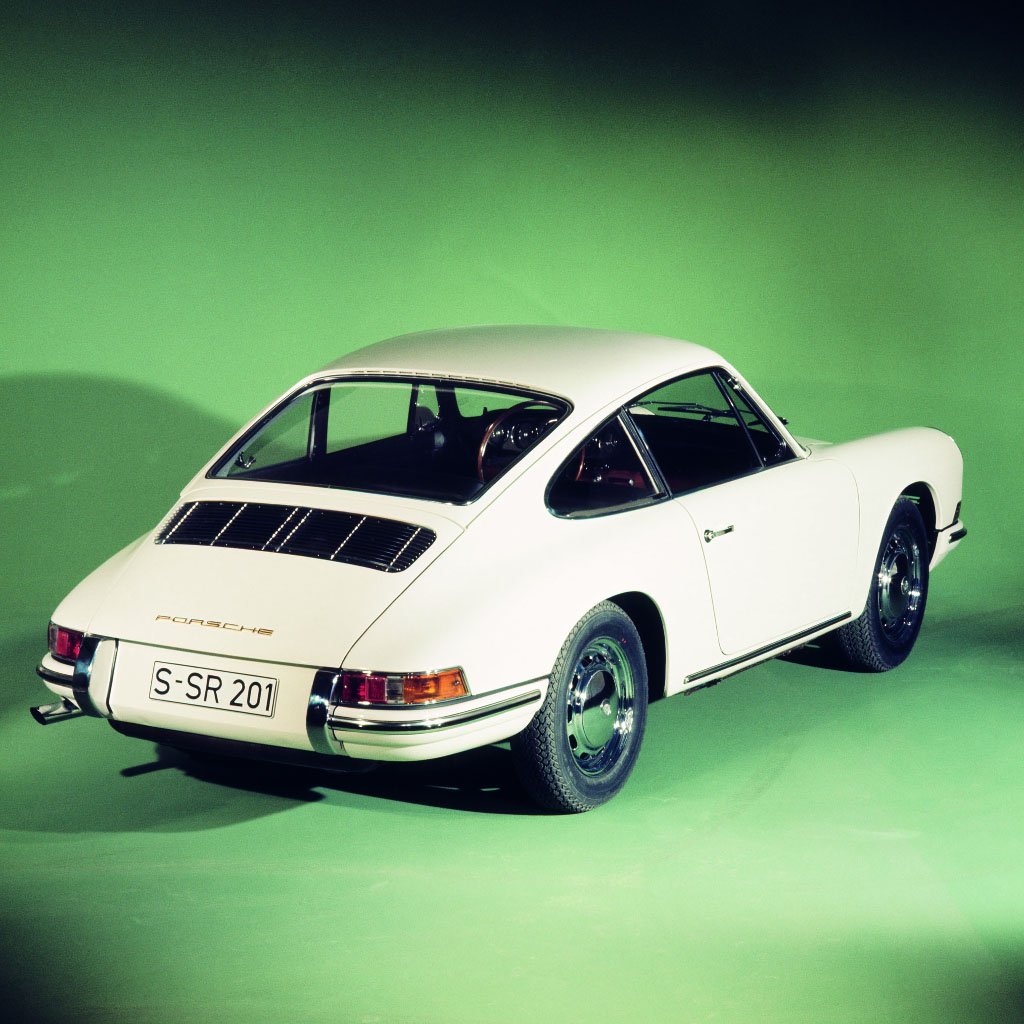
Porsche Press kit 1964 - landing page
With the introduction of the Type 901, the Porsche Company has added another car to round off the upper end of their current program of fast and economical automobiles. The new model was designed in the best of Porsche tradition, combining the virtues of the well proven Type 356 models with ideas and experience gathered by the technical staff of designers and development engineers over a period of many years. Being equal to the Carrera 2000 GS in weight and temperament, and even excelling it in top speed, the Type 901 will again demonstrate that in a Porsche driving is at its best. This car will provide unequalled driving comfort, handling, and safety - qualities which the demanding Porsche owner has enjoyed ever since the introduction of the first Porsche.
The engine is an air cooled, opposed six cylinder unit with one camshaft for each bank of cylinders (ohc). Applied in this design are concepts conceived and proven in the course of development of Grand Prix engines and high performance sports car engines. The crankshaft is mounted in eight main bearings. Component parts are, to a large degree, of light alloy. This engine was designed with due consideration towards its adaptability for competition use in appropriate stages of development. The two camshafts are chain-driven, a feature applied in Porsches for the first time. A new transmission has been designed for this car. Although similar to the previous units in mechanical operation, the new transmission has five forward speeds to cope with the extended speed range.
The front wheel suspension consists of the shock absorbers and low positioned transverse control arms, with springing effected by longitudinal torsion bars. Suspension of the rear wheels is by longitudinal control arms with transverse torsion bars. Power is transmitted to the rear wheels by twin-joint half-axles.
The rack-and-pinion steering is positioned in the forward center of the vehicle. Owing to this arrangement, which necessitated the utilization of relay shafts in place of a solid steering rod, the aspect of interior safety has been greatly enhanced. The car is equipped with disc brakes on all four wheels.
In view of considerations given to body dimensions, it became necessary to consolidate the new components into a compact unit. The inside space has been enlarged while keeping the outside dimensions down - here exceeding the overall length of the Type 356 by only 120 mm, yet reducing the overall width by 70 mm. At the same time larger window areas have been provided, to satisfy the demands of today.
Despite of the reduced overall width, it was possible to widen the forward passenger space. Retained basically unchanged is the seating arrangement which provides utmost comfort on long distance trips. Leg room behind the forward seats has been extended by approximately 6 cm. Both front fenders have been made detachable to simplify repairs.
A special effort was made to provide an adequate solution to interior ventilation. The spacious luggage compartment under the front hood of the car provides adequate space for the accomodation of suitcases and other luggage.
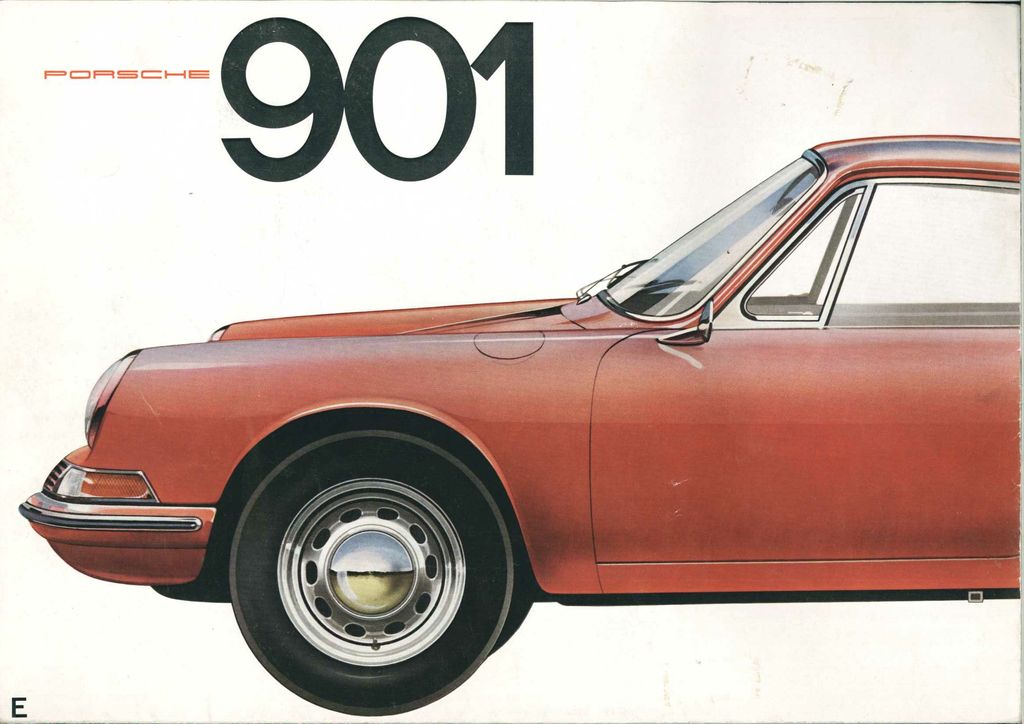
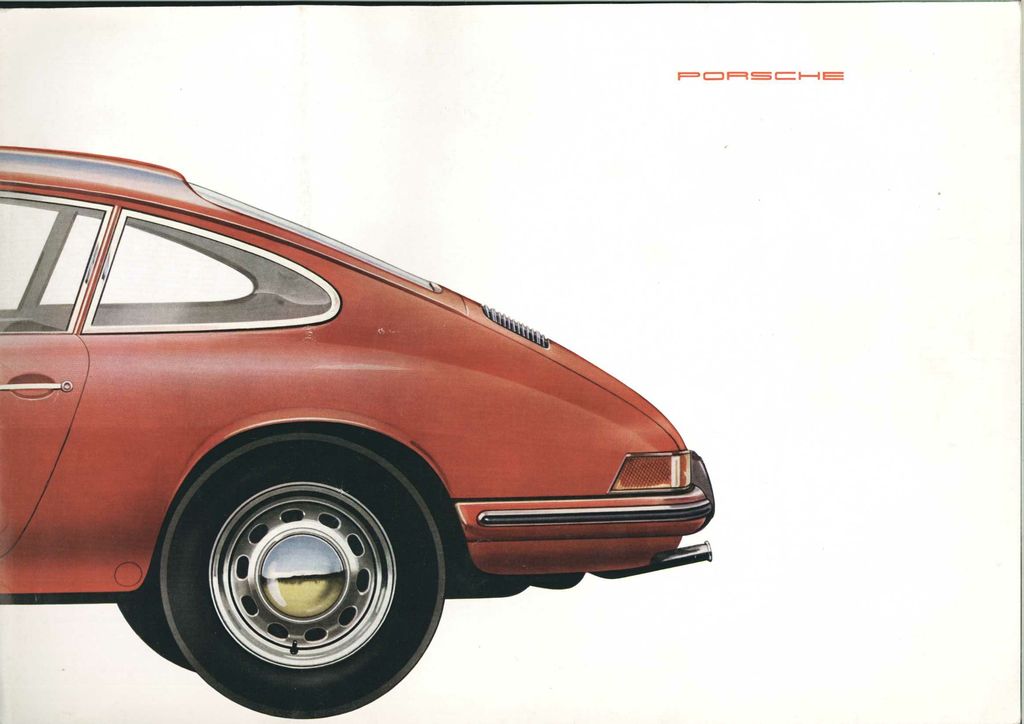
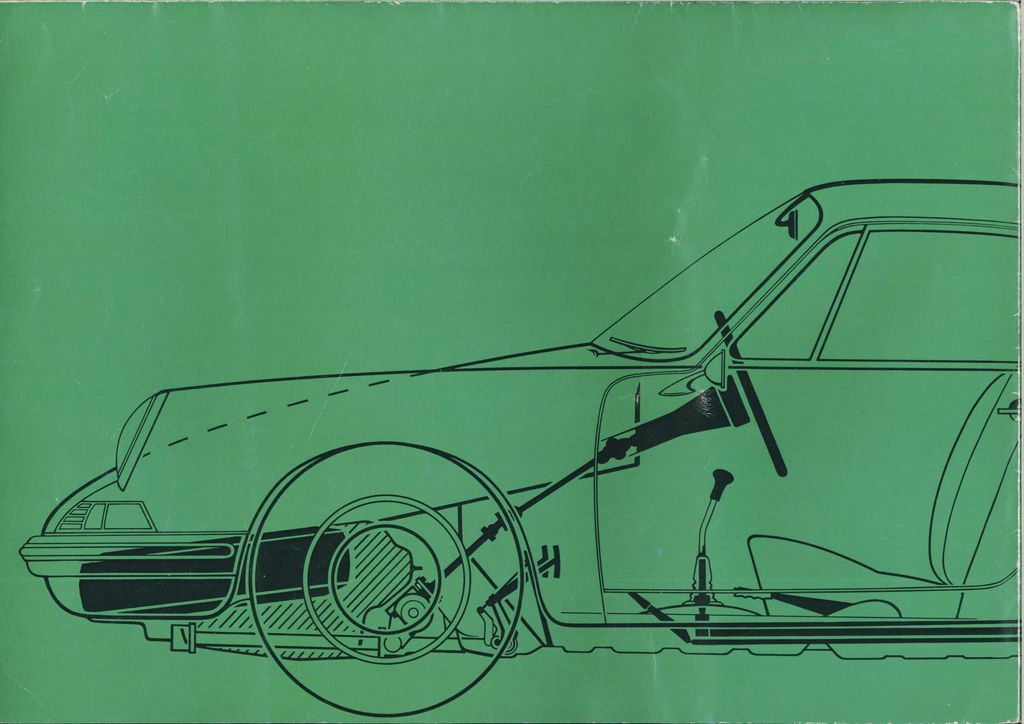
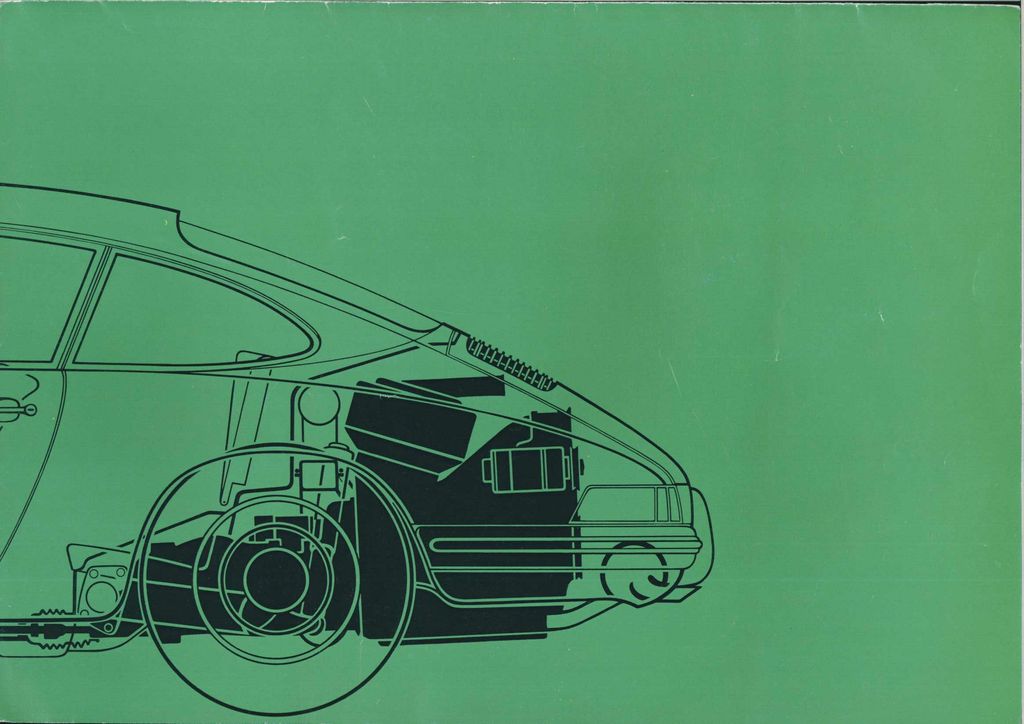
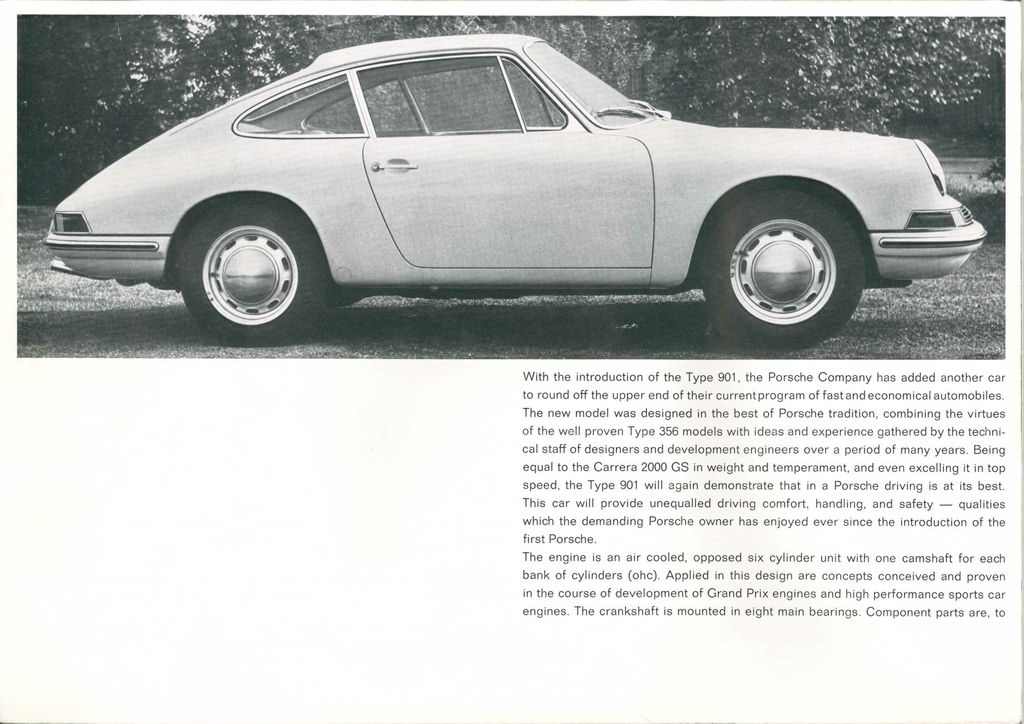
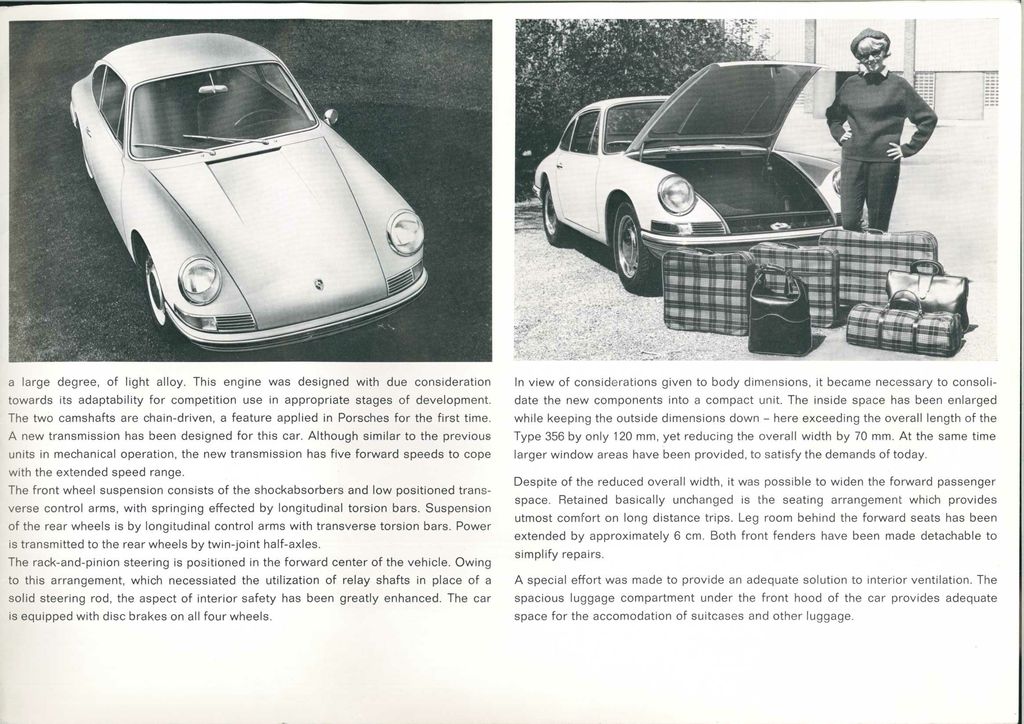
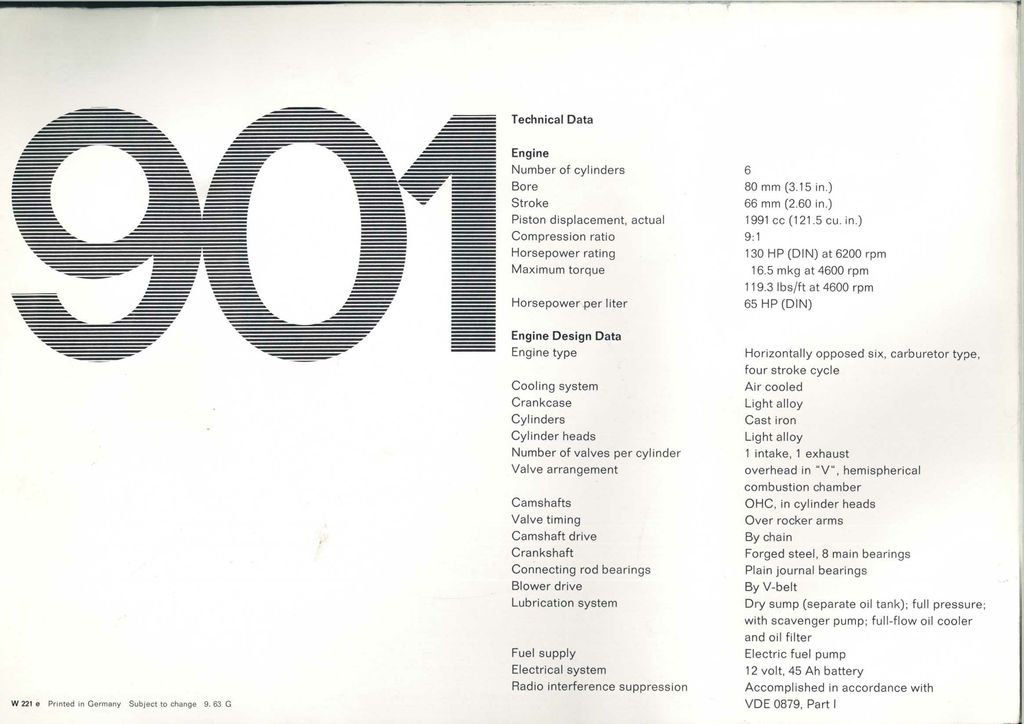
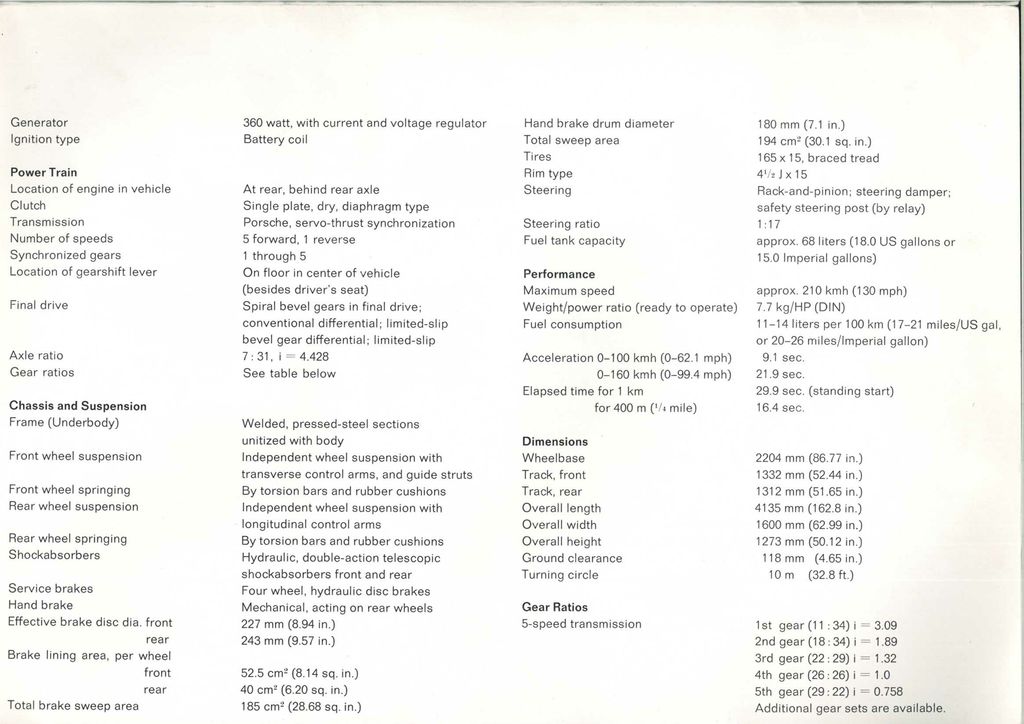









Porsche Press kit 1964 - landing page
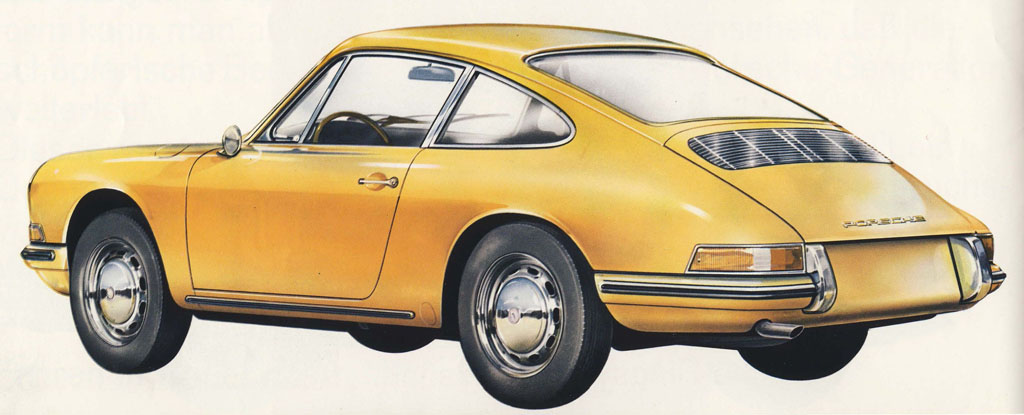
Brochure Porsche 911 (MY 1965)

Porsche Press kit

Porsche Literature

Our Porsche Cars